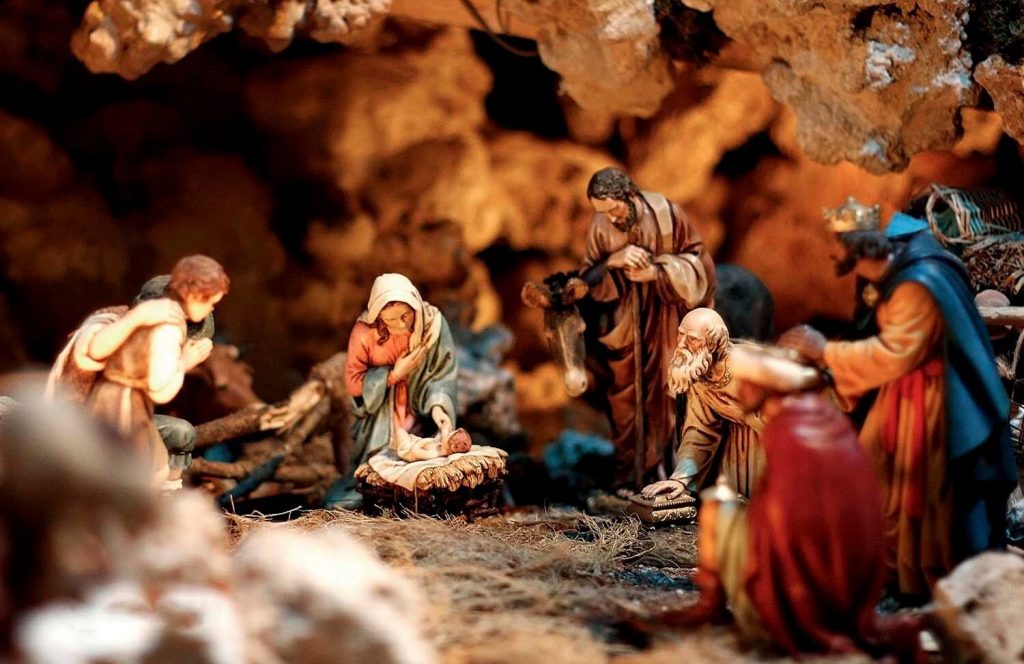As December closes in, many crib enthusiasts will be laboriously detailing their works of art, in time for Christmas. Indeed, crib making is a tradition and a labour of love that is transmitted from one generation to the next, and it reaches its glory in the Christmas season when a lot of cribs are put on display in public places and private homes.
Cribs (‘presepju’, in Maltese) and dioramas of various sizes and dimensions, made from all sorts of material, are traditional displays of the nativity scene. The birth of Jesus Christ, the manger scene with Mary and Joseph, the shepherds, the angels and the Magi are naturally present along with a variety of animals – the donkey, the ox, sheep and the camels.
Traditionally, the crib is made by taking a strong base and mounting on it a series of paper mâché, (locally referred to as ‘cartapesta’) structures and mould it to resemble the landscape with the cave outside Bethlehem. ‘Cartapesta’ is a technique utilising old papers and glue to craft the whole structure. Wire mesh or other material can be used as a skeleton for the structures that are covered with paper mâché. This can be a lengthy process as one needs to patiently wait for each layer to dry before proceeding to the next stage. This is where true craftsmanship comes in as some artists will spend endless hours working on creating the most detailed landscape and some cribs are truly great works of art. The final stage is painting the landscape in colour, embellishing the grotto, the fields, the rugged paths and any other buildings that make up the diorama.
Over the years, cribs have become more elaborate involving the use of materials such as wood, cork, cloth and expanded polystyrene. Different materials give rise to new opportunities and creative ideas. While most craftsmen present static representation, others toil on new complex compositions using lighting and electronic systems. With the use of mechanised contraptions like water mills and windmills, moving statuettes, flickering lights imitating burning wood and sounds of gurgling streams and farm animals, there is no doubt that the passion infused with know-how yields a nativity scene with added appeal.

There’s no crib without ‘pasturi’, or the traditional statuettes that are placed in the crib. The crib can take various forms and structures and the same can be said for the variety, type, size and style of figurines that populate Gozitan cribs. The figurines that are used need to match the size of the structures and that is actually one of the first considerations when planning out a crib. Today many cribs feature modern resin-based figurines that are imported from places like Italy. However, some still have the old clay ‘pasturi’. These treasured ‘pasturi’, dressed in traditional Maltese and Gozitan costumes, are more fragile than the resin counterparts but very evocative of rural Gozo and many will look at them with nostalgia remembering the Christmases of years gone by. Other types of more precious figurines, such as custom-made sculptures, and figures dressed up in ornate cloth costumes might not be as common but you’re bound to see some when you visit the crib exhibitions held on display in various places in Gozo.
Apart from all these, then there are the live cribs, involving pageantry and acting. Foremost among which, is ‘Bethlehem f’Għajnsielem’. Visitors can admire the artistry of the craftsmen and artists who plan and build life-sized structures to present to the public a Christmas village that emanates the authentic spirit of Christmas.
Gozo’s mastery in crib-making has not gone unnoticed. In fact this year, the Vatican’s own crib in St Peter’s Square will be a crib that has been designed and created by Gozitan artist, Manwel Grech.
Today, even schoolchildren are encouraged to create their own nativity scene from any kind of material that tickles their fancy. Their efforts are promoted through exhibitions, displaying the little nooks and grottos that the children create. Naturally, one hopes that the enthusiasm of the little ones will stay with them through life and that some will be the next generation of craftsmen that will take the Gozitan cribs into the future.
READ NEXT: Planning your Christmas Holiday









